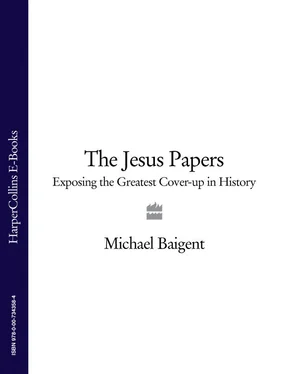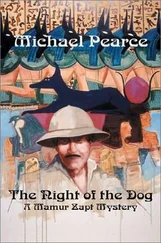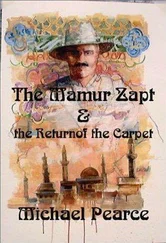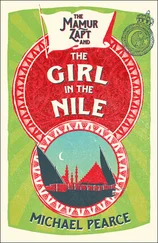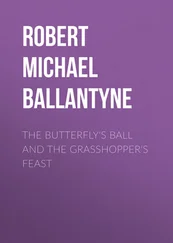THE JESUS PAPERS
Exposing the Greatest Cover-Up in History
MICHAEL BAIGENT
Cover Page
Title Page THE JESUS PAPERS Exposing the Greatest Cover-Up in History MICHAEL BAIGENT
Introduction
1 Hidden Documents
2 The Priest’s Treasure
3 Jesus the King
4 The Son of the Star
5 Creating the Jesus of Faith
6 Rome’s Greatest Fear
7 Surviving the Crucifixion
8 Jesus in Egypt
9 The Mysteries of Egypt
10 Initiation
11 Experiencing the Source
12 The Kingdom of Heaven
13 The Jesus Papers
14 Trading Culture
Postscript
Notes
Bibliography
Index
Acknowledgments
Copyright
About the Publisher
May 28, 1291, The Holy Land: Acre, the Crusader Kingdom’s last city port, lay in ruins. Only the great sea tower of the Knights Templar remained standing.
For seven weeks the Arab armies of Khalil al-Ashraf, the young sultan of Egypt, had first besieged and then attacked the city. The last capital of the Christian kingdom was finished. Its streets, once crowded with warriors and nobles, merchants and beggars, were now filled with tumbled buildings and bodies. There was no sense of embarrassment over “collateral damage” in those violent days; when a city fell, slaughter and theft were freely indulged.
The Arabs were determined to force every last vestige of the Crusaders into the sea; the Crusaders were equally determined to survive with the hope, however forlorn, that they might be able to resurrect their kingdom. But this hope faded once Acre had fallen. Beyond the smoking, bleeding ruins of the city only the great tower of the Templars stood undamaged. Crammed inside were those who had so far survived, together with fifty or sixty knights—the last remnants of what was once a great fighting force, a standing army, in the Christian kingdom of Jerusalem. They waited. There was nothing else they could do. No one was coming to save them. A few ships returned, a few more knights and civilians fled. The others waited for the end to come and for the next week fought off continual assaults.
Such had been the intensity of the fighting that even the Templars despaired. When the Sultan offered to let all the knights and civilians depart unharmed if they abandoned the castle, the Marshal of the Templars, who was directing the resistance, agreed. He allowed a group of Arab warriors led by an emir to enter the castle and raise the Sultan’s standard above it. But the ill-disciplined Arab troops soon began to molest the women and boys. In fury, the Templars killed them all and hauled down the Sultan’s standard.
The Sultan saw this as treachery and set about his own brutal retaliation: the next day he repeated his offer of safe passage. Again it was accepted. The Marshal of the Templars, together with several knights, visited him under a truce to discuss the terms. But before they reached the Sultan, in full sight of the defenders manning the walls of the Templar castle, they were arrested and executed. There were no further offers of an orderly surrender from the Sultan, and none would have been considered by the Templars: it was to be a fight to the end.
On that fateful day, the walls of the Templar castle, undermined by Arab miners, started to crumble: the Arabs began their assault. Two thousand white-robed mameluk warriors crashed their way into the breach made in the Templars’ tower. Its structure, compromised by weeks of assault, gave way. With a sudden roar the stones fell, tumbled down upon themselves, crushing and burying both attackers and defenders. When the stones stopped moving and the dust settled, the silence proclaimed that it was all over. After almost two hundred years, the dream of a Christian kingdom in the Holy Land had been quashed.
Even the Templars now abandoned their few remaining castles and withdrew from the land that had claimed some twenty thousand of their brethren over 173 years of often bitter fighting.
The Templars had long fascinated me. Not just their role as a professional army and their great but much ignored contribution to the beginnings of our modern world—they introduced the power of money over the sword by means of checks and safe financial transfers from city to city and country to country; they drove a wedge between the dominant aristocracy and the exploited peasantry that helped open a space for a middle class—but the aura of mystery there had always been about them. In particular, at least some of them seemed to hold to a type of religion that ran counter to that of Rome. Bluntly, they seemed to harbor heresy within their ranks, but little was known about this. I was curious, and I was determined to seek out some answers. I began to research the mysterious side of the Knights Templar.
One day while I was sitting in a bookshop in London, a friend of mine who happened to own the store came up to me and said that there was someone I should meet, someone who had information about the Templars that might interest me. And that is how I met my colleague, Richard Leigh. We ended up writing seven books together over the next twenty years.
Richard was certainly sitting on some interesting information—data that had been passed on to him by Henry Lincoln. Richard and I quickly realized that we should combine forces. A few months later Henry came to the same conclusion. We formed a team, and as they say, we went for it. The result, six years later, was the best-selling book Holy Blood, Holy Grail .
Our major hypothesis involved an insight into both the Crusades and the Grail legends—two subjects rarely linked by historians. Behind both subjects, we discovered, lay an important bloodline, a dynasty: that of the Jewish royal lineage, the Line of David.
The Grail legends combined elements from ancient pagan Celtic tradition with elements of Christian mysticism. The symbol of a bowl or cup of plenty that ensures the continued fertility of the land derived from the former, while from the latter came the descriptions of the Grail in terms of mystical experience. But significantly for us, the legends stressed that the Grail Knight, Perceval or Parsival, was “of the most holy lineage,” a lineage stretching back through history to Jerusalem and the foot of the cross. Clearly, this was referring to the Line of David. This point had been missed by all commentators on the Grail before us.
We argued that the term for the Grail, the Sangraal or Sangreal, which was rendered as San Graal or San Greal —Holy Grail—had been a play on words: splitting them slightly differently, as Sang Real , gave the game away: Sang Real translates as “Blood Royal,” meaning, we argued, the royal blood of the Line of David. Truly, for medieval times, this was a “most holy lineage.”
That the Line of David existed in southern France in the early medieval period is not in doubt. It is a fact of history.
When Charlemagne was establishing his kingdom, he named one of his close companions, Guillem (William), Count of Toulouse, Barcelona, and Narbonne, as ruler of a buffer princedom between the Christian kingdom of Charlemagne and the Islamic emirate of Al Andalus—Islamic Spain, in other words. Guillem, the new prince, was Jewish. 1 He was also of the Line of David. 2
The twelfth-century Jewish traveler Benjamin of Tudela, in his chronicle of his journey from Spain to the Middle East, revealed that the prince at the head of the Narbonne ruling nobility was “a descendant of the House of David as stated in his family tree.” 3 Even the Encyclopedia Judaica mentions these “Jewish kings” of Narbonne—but ignores their bloodline. 4 Of course, no one liked to ask where this bloodline, mentioned by Benjamin of Tudela, might have come from. In fact, as we were to find out, the situation was quite complicated.
Читать дальше
